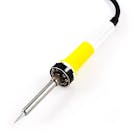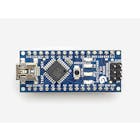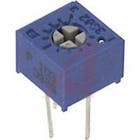Music Reactive LED Strip
DESCRIPTION
My 14yo niece is getting into music, so I wanted to make her something cool for her room. I've also been interested in sound-reactive projects, so this was a good learning project.
Demo
Here's the demo on Youtube.
Introduction
This project was pretty simple and has been done countless times, but for me, it was fun to put together a bunch of pieces and to package it into a fun "end product".
I used the Arduino Nano as the base. Used the FFT library to decode the sound into octaves, FASTLed library to drive the led strips, and an old iPhone C case to hold it all together.
A few notes about the software/features:
1) I use a 10kOhm POT to control the sound sensitivity
2) Microphone/amplifier is sensitive to noise, so I shielded the wires/leads with grounded metal tape...which helped a lot.
3) The strip responds in a few ways.
- changes color/brightness/saturation based on volume of each octave
- repeats the same 11 LED pattern across the strip (but morphs the colors and flip-flops each set so it looks more continuous
- as it gets louder, the pattern chases along the strip
- at the loudest, it strobes white briefly
- you need to test out the pink noise to get it tuned correctly. this changes from board to board
4) I used an old 12V 1.5A Wall Wart as power supply. It's a little underpowered... but should be okay if she doesn't drive it so hard. I think a 24V 2A supply would be better. Also, I could have put in a larger capacitor (instead of the just the 470uF) at the power supply to the LED's. That would have helped with the current bursts. Next time...
 |
|
My 14yo niece is getting into music, so I wanted to make her something cool for her room. I've also been interested in sound-reactive projects, so this was a good learning project.
Demo
Here's the demo on Youtube.
Introduction
This project was pretty simple and has been done countless times, but for me, it was fun to put together a bunch of pieces and to package it into a fun "end product".
I used the Arduino Nano as the base. Used the FFT library to decode the sound into octaves, FASTLed library to drive the led strips, and an old iPhone C case to hold it all together.
A few notes about the software/features:
1) I use a 10kOhm POT to control the sound sensitivity
2) Microphone/amplifier is sensitive to noise, so I shielded the wires/leads with grounded metal tape...which helped a lot.
3) The strip responds in a few ways.
- changes color/brightness/saturation based on volume of each octave
- repeats the same 11 LED pattern across the strip (but morphs the colors and flip-flops each set so it looks more continuous
- as it gets louder, the pattern chases along the strip
- at the loudest, it strobes white briefly
- you need to test out the pink noise to get it tuned correctly. this changes from board to board
4) I used an old 12V 1.5A Wall Wart as power supply. It's a little underpowered... but should be okay if she doesn't drive it so hard. I think a 24V 2A supply would be better. Also, I could have put in a larger capacitor (instead of the just the 470uF) at the power supply to the LED's. That would have helped with the current bursts. Next time...







NOTE that you can't disable the TIMER for FFT, because FASTLed requires the timer.